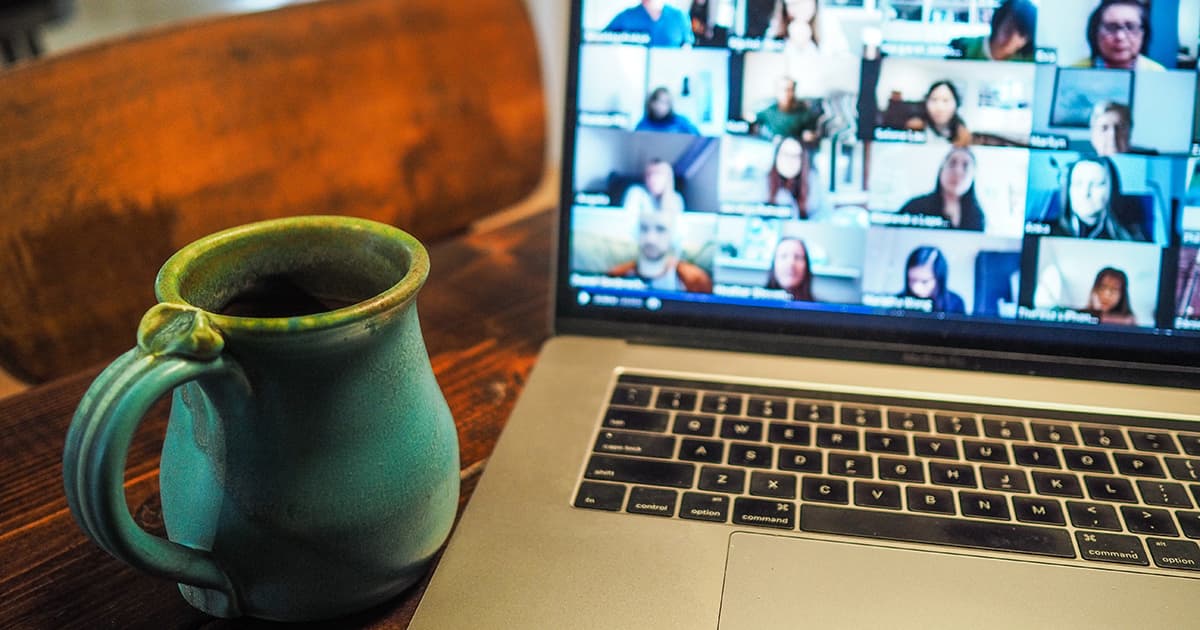
Over the last year, the increased need for virtual interviews has expanded the opportunity for experts and researchers to share their knowledge. But how does an interview work from home? How should you prepare? We’ve got 10 tips to help you crush your next remote interview.
- Check your internet connection: Make sure you have a strong enough connection to keep the call going without lag time or cutting out. Practice calling a friend or colleague from the same space you plan to make the call in to test it out.
- Minimize noise: Put your cell phone on silent. Find the quietest space you can that’s without ambient noise. Keep pets and children out of earshot if possible.
- Prepare your space: Confirm beforehand if the interview will include video and audio so you don’t arrive in your pajamas. Make sure you’re in a well-lit area, neither backlit nor with a bright light pointed directly at your face to cause a glare (especially if you wear glasses). Your background should be as empty and clutter-free as possible — or you can use a virtual background.
- Prepare yourself: Wear a solid-colored top in a dark or muted color; no busy prints or neon hues. Make sure your webcam/computer screen is set at eye-level so that you’re looking straight ahead at the interviewer. Center yourself a couple of feet away from the screen. It’s best to be seated for an interview, so you avoid the temptation of spinning your chair, swaying or rocking on your feet. Keep your face relaxed and try not to fidget or touch your face.
- Keep responses short: Find out whether the interview is going to be live or pre-recorded. If it’s live, you’ll need to have short, concise answers at the ready; if it’s being recorded for later, you’ll have more of a chance to start over if your answer isn’t working out.
- TV segments are always brief, so practice stating your key message in 45 seconds to 1 minute. If they send questions ahead of time, practice answering them as succinctly as possible. They will likely use less than 2 minutes of what you say, so make them count.
- Stay on track: Keep a list of 3-4 key points nearby that you can glance at to make sure you’re getting your message across.
- Restate the question: Allow the interviewer to finish asking their question before you begin speaking so there isn’t audio overlap. Then, restate their question in your answer – the final news segment likely will not include their question, so your answer must give that context.
- For example: Q: “What is the biggest challenge facing people with disabilities during this period of forced isolation?” A: “The biggest challenge facing people with disabilities during this period of forced isolation is….”
- Don’t talk too fast, even as you are keeping your answers as brief as possible.
- Redirect when needed: If they ask a question that’s outside the scope of your research or expertise, it’s totally fine to say, “We didn’t look at that in our study/I haven’t studied that specifically, but I can tell you ___” to redirect the conversation back to what you do know and want to talk about.
- Follow up: After the interview, consider sending the reporter an email to thank them for their time and remind them that you’re available to answer follow-up questions or clarify things if needed, and to ask if they can send you a link to the story once it’s online, if possible. Be forewarned that you may receive lots more media calls after the segment airs, now that other reporters know your name!
Email the CPHHS Marketing team (cphhs.marcomm@oregonstate.edu) with questions regarding the media and/or to request media training. And remember to email Molly Rosbach in OSU News & Commnications about research that may be of public interest — before it’s published!